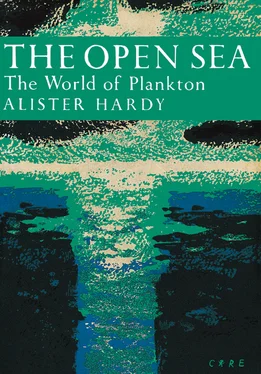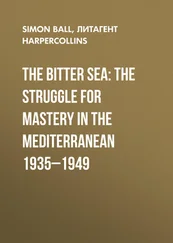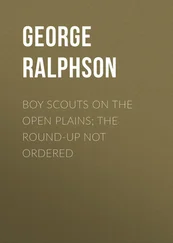In coastal regions we may find a number of typical bottom-living diatoms carried up into the plankton, such as the boat-shaped members of the genus Navicula . They are capable of a remarkable gliding movement, thought to be produced by a flow of protoplasm passed out through a slit in the wall of the cell. Gyrosigma is another bottom form often met with in the shallow-water plankton. Other related forms such as Bacillaria and Nitzschia are more planktonic but typical of coastal waters. B. paradoxa forms bands of long slender cells held together side by side like the planks in a raft yet each capable of sliding up and down along its neighbours; N. seriata , in contrast, forms long strings of narrow boat-shaped cells end to end with just their tips overlapping and in contact.
It is impossible to mention all the kinds of diatoms of our seas in such a general review, and I shall only refer to one other species, one which may well attract attention: Asterionella japonica ( Plate 1). Its cells are rod-like but thickened at one end; by these thickened ends the cells remain attached to one another to form beautiful radiating star-like clusters.
In striking contrast to the brown-green colouring of the diatoms is the brilliant green sphere of Halosphaera viridis which may reach a size of nearly a millimetre in diameter; it and one or two closely allied species are the only representatives in the marine plankton of the Yellow-green Algae or Heterokontae. H. viridis is found over the whole Atlantic from the tropics to the far northern branches of the North Atlantic current off Spitsbergen. In autumn it is often brought into the northern North Sea in large numbers and is usually found floating very near the surface. It is exceptional in its mode of reproduction; it does not divide in two, but when full-grown undergoes multiple fission into a large number of small spores which break out of the surrounding envelope and swim, like the flagellates about to be described, by the use of whip-like locomotory organs. The full life-history has not yet been observed; whether after fusing with others or not, these spores must eventually give rise to the little green spheres which gradually grow to a full size again.
FIG. 15
Some flagellates of the plankton. a–h , Dinoflagellates: a , Ceratium fusus (×180); b , C.macroceros (×200); c , Protoerythropsis vigilans (×320) (note clear spherical lens against dark eye-spot); d , Dinophysis acuta (×400); e , Peridinium granii (×360); f and g , P. ovatum (×320), side and top view; h , Polykrikos schwarzi (×250); i and j , the Silicoflagellate Distephanus speculum living and half of skeleton (×320); k , a very small part of the large gelatinous capsule formed by the tiny cells of Phaeocystis ; l and m , Coccolithophores (×1000): Coccolithus huxleyei and Coccosphaera leptopora ; n–r , some of the smallest flagellates (×1500): n , Dicrateria inornata ; o , Hemiselmis rufescens ; p , Isochrysis galbana ; q , Pyramimonas grossii ; r , Chromulina pleiades. Original drawings except c from Marshall (1925), h from Lebour (1925), m from Murray and Blackman (1898) and n to r from Parke (1949).
All the remainder of the planktonic plants belong to the big assemblage of organisms known as flagellates of which there are many different kinds. A selection of the commoner forms is shown in Fig. 15. They are all characterised by possessing at least one, and often two, of the motile whip-like processes termed flagella, with which they draw or propel themselves through the water and are thus able to keep up in the sunlit surface layers. These flagellates are claimed for study by both botanists and zoologists, for among them are indeed both plants and animals—and some which have the characters of both in one. Some possess green pigments allied to chlorophyll or even chorophyll itself, and so feed as true plants; others lack pigment and may feed either by absorbing organic substances through their surface or actually live as animals by capturing particulate food; yet again, others may combine the methods of plant and animal feeding. In this lowly group of organisms the animal kingdom has not yet become fully separated from the plant kingdom. However, most of the planktonic flagellates are in fact plants and most of them have a small red ‘eye-spot’ or stigma which is sensitive to light and so enables them to tell whether they are moving towards or away from the radiant energy necessary to build up their food. If you are able to obtain a plankton sample very rich in these small green flagellates you will be able to see how readily they are attracted upwards towards the light. Fill a tall narrow glass jar with the sample and cover the lower three-quarters with thick brown paper. Now if you leave it for half an hour in the full light of the window you will find on removing the paper that the top quarter of the jar is distinctly greener than the rest; the little flagellates from the whole jar have become concentrated in the sunlit zone. By standing a sample of sea water in the light you may be able to grow a more abundant culture of these little flagellates and so give a more striking demonstration of this experiment. There are some of the Dinoflagellates (members of the family Pouchetiidae) which have a much more elaborate light-sensory organ furnished with both a lens and a pigment-cup; indeed it might almost be called an eye. One of these is shown in Fig. 15c.
The Dinoflagellates are the most striking members of the phytoplankton after the diatoms and are usually present in large numbers; for a full account of them another excellent volume by Dr. Marie Lebour (1925) should be consulted. They have a cell wall made up of a number of plates of cellulose fitting together to form a mosaic and are characterised by possessing two flagella: one working transversely in a prominent groove which almost completely encircles the body like a girdle, the other projecting behind from out of a small longitudinal groove running backwards from the girdle. This latter groove is often protected by curtain-like membranes so that the flagellum may be withdrawn spirally into a sheath. Typically, as in Peridinium , they have a single spine pointing forward in front and two spines projecting backwards from the half of the body behind the girdle. The flagellum working in the groove sets them waltzing round as they are at the same time driven forwards by the other flagellum behind ( Fig. 15); they screw themselves through the water. There are a great many species of Peridinium and closely allied genera with very much the same general appearance ( Plate IIIb); one related genus, however, Ceratium , is most striking in having the spines drawn out into long horns, with the two posterior ones usually curving forwards to give the whole body the shape of a little anchor. Sometimes, particularly in late summer and autumn, plankton samples may be full of Ceratium tripos or perhaps another of the many species of the genus distinguished by only small differences ( Plate Ib). Two species which are very common in our waters stand out in contrast to the rest: Ceratium furca ( Plate 1) in which the posterior spines are rather short and point straight backwards, and C. fusus ( Fig. 15) in which there is only one posterior spine, long and only very slightly curved, just like the anterior one. There is a remarkable range of colour in Ceratium from a bright green to a yellow-brown.
Читать дальше












